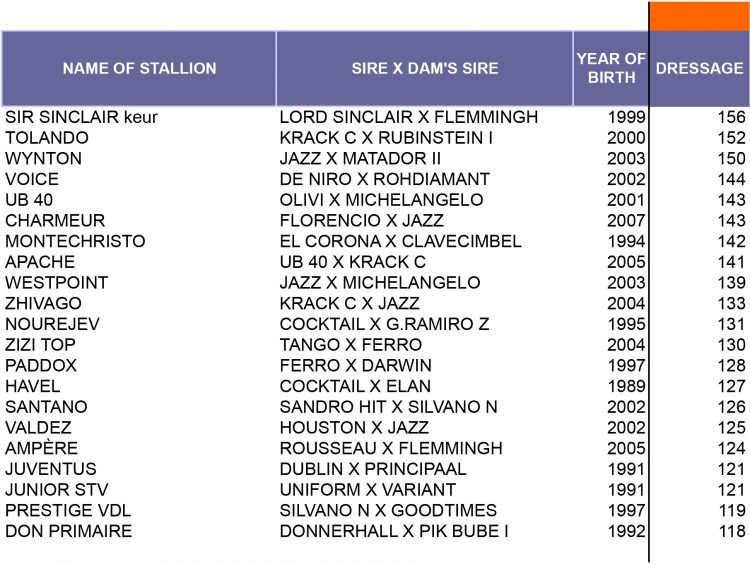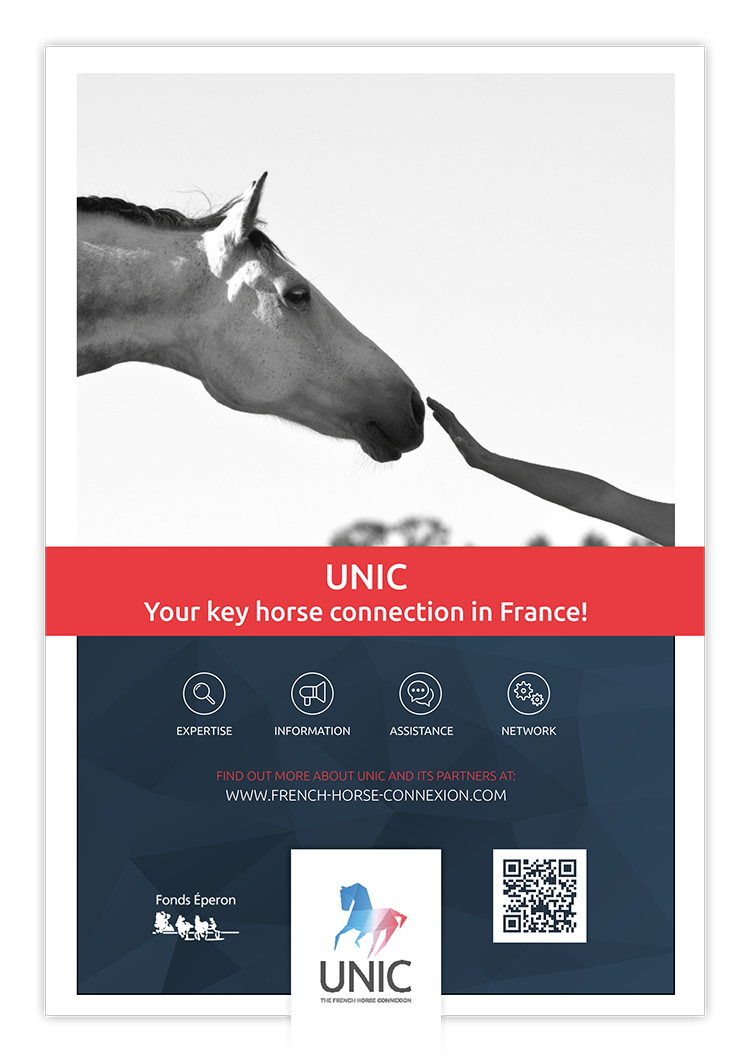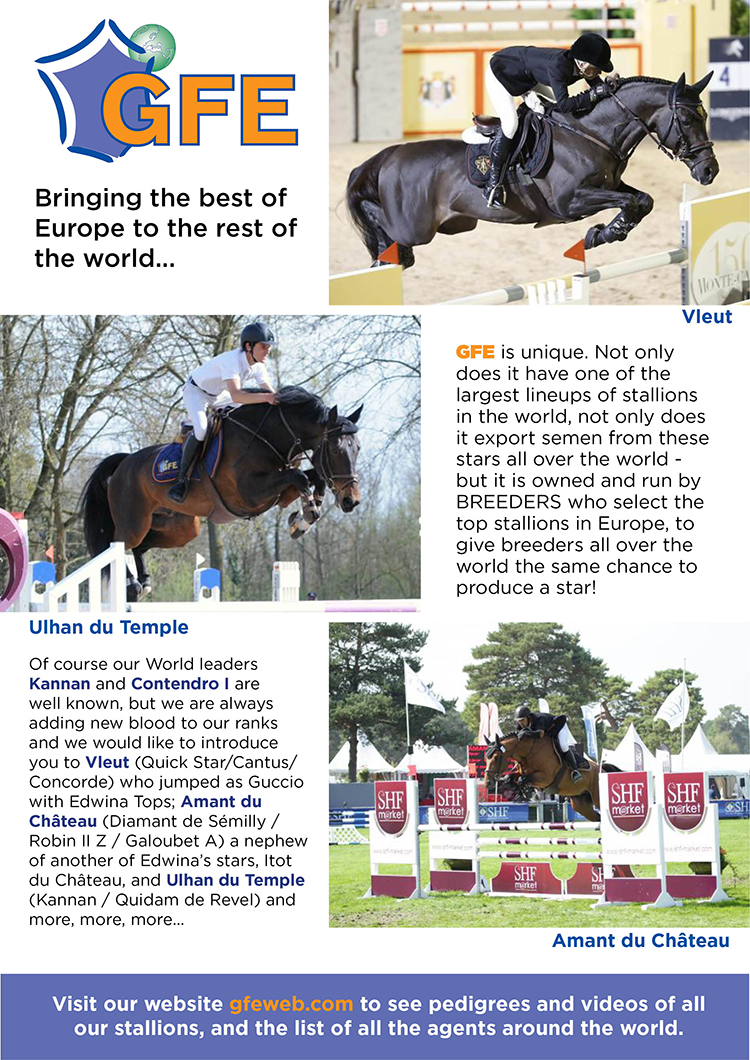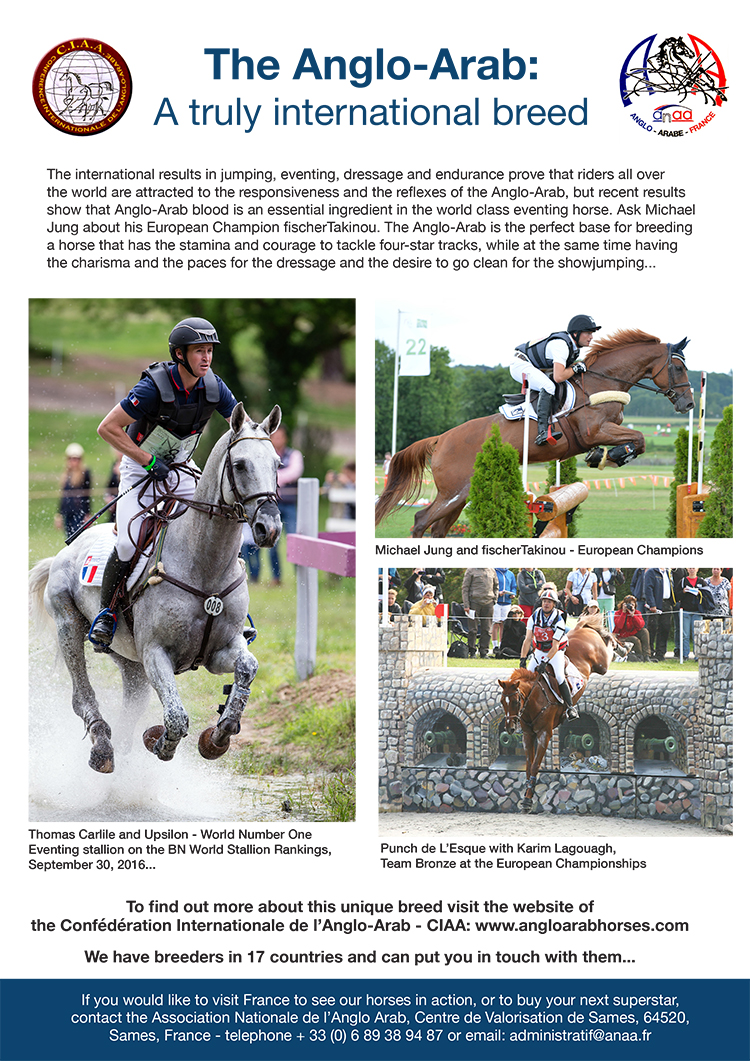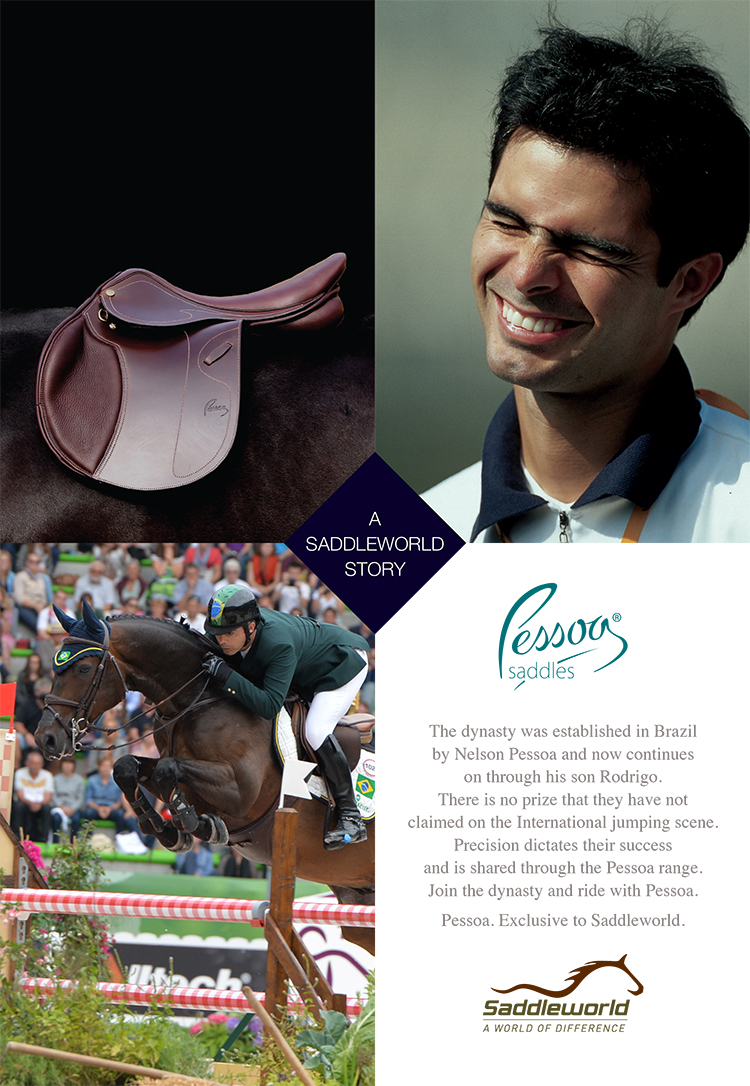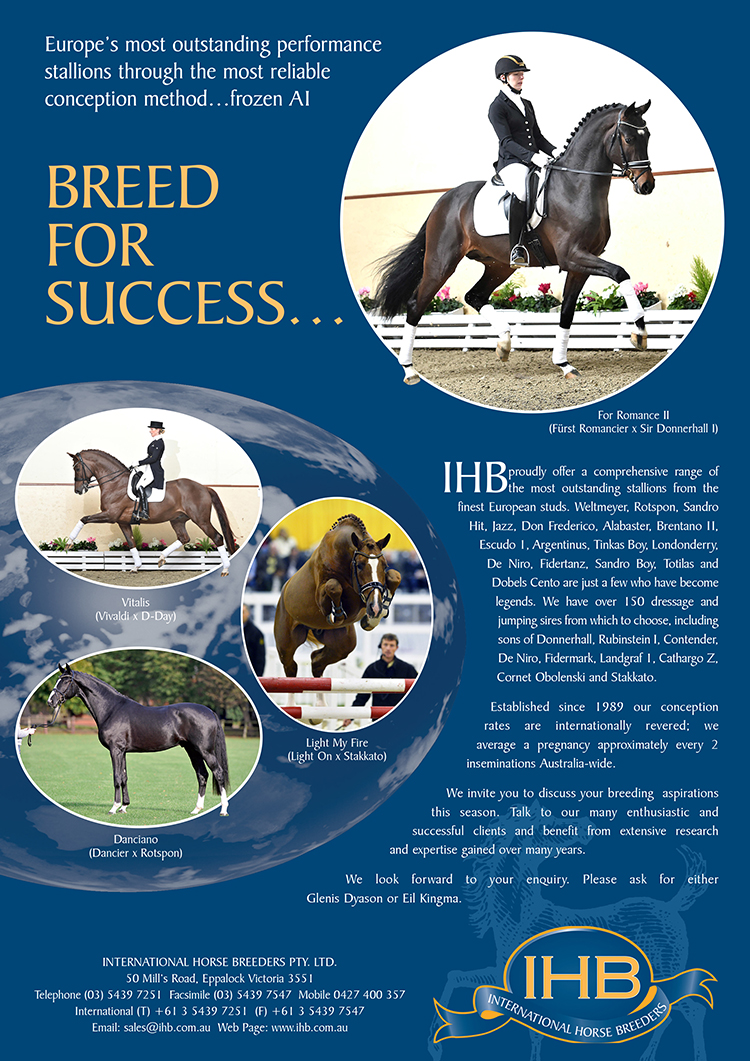 Christopher Hector looks at this year’s results
Christopher Hector looks at this year’s results
France was the pioneer when it came to ‘breeding by numbers’ and it was in France that the breeding values became more or less official policy, and in France that the reaction against the breeding values, the strongest and most vocal.
The BLUP (Best Linear Unbiased Predictor) was introduced to French Horse breeding in 1988, two years before the German FN first published their integrated breeding values.
BLUP is a mathematical model used in all ‘breeding values’ calculations, but it was not designed for horse breeding – it has been used to predict everything from the frequency of volcano eruptions to the growth rates of chickens. In the case of the French horse, the BLUP is calculated from the ISOs (that’s performance results) of relatives, the sire and dam (if-and-when they compete) and of their progeny; a foal is then born with a BLUP rating based the performances of his forebears and his siblings.
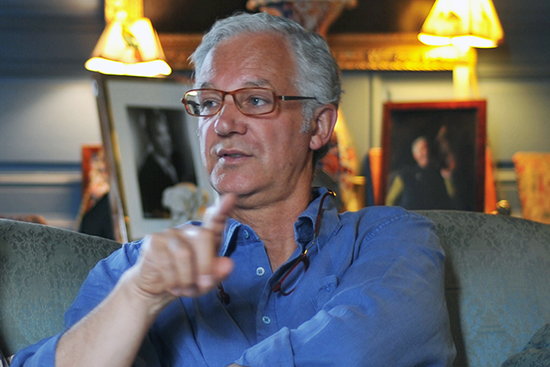
Journalist, and breeder, Bernard le Courtois
One of the most outspoken critics of the BLUP has been the French equestrian journalist, and breeder, Bernard le Courtois. Writing in the 1994 edition of Monneron, some six years after the introduction of the mathematical model, he had this to say:
“In the beginning I was optimistic concerning the BLUP; even though I have always been convinced that nothing can replace experience and observation and the know-how of a horseman. Today, with hindsight, I am aware of the system’s aberrations as well as the way in which it has been abused.”
“Many newcomers in the horse world grabbed onto BLUP like a childishly simple life-buoy. Suddenly they felt on an equal par with the professionals, imagining that this index would make up for their lack of knowledge, without realising that they were fooling themselves. They hid behind the BLUP, believing it would protect them.”
He turns to the evidence of the scientist, Professor Signoret: “The principle of the BLUP method is excessively simple, even simplistic. It affirms a priori that a foal that is born will, providing all else is equal, represent an average between his father and mother. Breeders, genetic specialists, and those involved in improving domestic breeds know that, generally speaking, this is not the case. Only milk production (in cows) is the happy exception confirmed by experience.”
It turns out that the equine BLUP index is nothing more than an adaptation of the American milk BLUP index!
read on
As a result of the negative reaction, the policy of using BLUP to license stallions has been scrapped, and the BLUP results appear just once a year in the magazine L’Eperon and it would seem no one takes very much notice of them.
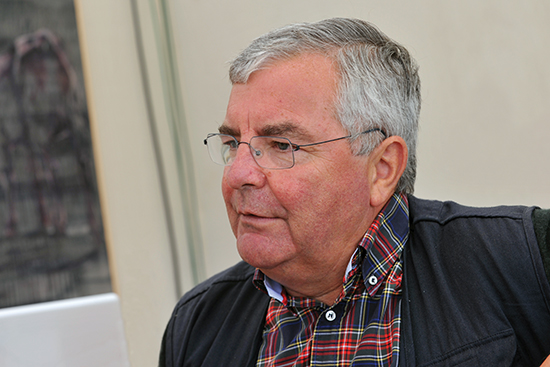
Arnaud Evain, brilliant commentator
Arnaud Evain, another brilliant commentator on the French breeding scene, is of the opinion that currently the pendulum has swung too far in the other direction. He feels that while in the past, the BLUP figures were over-used, particularly in stallion selection, that now they are not being used as they could be – not as a means of selecting stallions, but as a way of improving the mare band.
“If the BLUP is not a good predictor of the individual quality of a particular sporthorse, it is a very reliable predictor for the average quality of the production of a large group of males or females: for example, if you use the same stallion on a group of 30 mares with a BLUP of 15 and on a group of 30 mares with a BLUP of 20 and breed and train both groups under the same conditions you can expect with over 95% precision that the average jumping index of the second group will be 5 points higher than the first group!”
“The BLUP is a wonderful instrument to improve the genetic level of a large group, and a very tricky one to make individual predictions.”
Arnaud tries to explain…
Arnaud counsels: “This is a very accurate system but trying to understand it, brings a headache! You can take two Advils, one glass of good wine and call me tomorrow if you still don’t understand…”
Here is Arnaud’s key to understanding the French figures, you might bear in mind the need for either pain killers or a soothing glass in advance…
BSO means Best Linear Unbiased Predictor for Showjumping: the average jumping index of the progeny is expected to be, instead of 100, 100 plus the value of the BSO.
The CD is an indication of the precision, similar to the German and Dutch % prediction of reliability. When the CD is 1, it means that the prediction is 100% reliable; when it is less than 0.7, some big changes still can happen! So, for example, Diamant de Sémilly (Le Tot de Sémilly / Elf III) has the highest BSO, or breeding value, 29, with a CD of 0.99
The Value of the BSO changes – (+ or -) – when more progeny have been born and evaluated and when the CD, the index of reliability, increases.
The stallions are ranked not according to the BSO but the Borne Basse – BSO.
Arnaud again: “The ‘Borne Basse’ is the minimal value under which the BSO has 95% chances not to undergo when the CD will get close to 1! When the CD is high, the Borne Basse is close to the BSO. When the CD is low, the Borne Basse is significantly lower than the BSO.”
Now I did ask my pals at UNIC to explain what that paragraph means but they replied, they were sorry, but ‘we won’t be able to explain to you what this paragraph means in other words without confusing you even more.’
My friend and colleague, Jean Llewellyn, the editor of Breeding News for Sport Horses, is not one to give up, and when I told her the trouble I was having making sense of the dreaded Borne Basse, she unearthed Emmanuel Jeangirard – who came highly recommended as an expert on the French system of numbers!
Again, I’d suggest a soothing glass of white, but here it is:
First: what is said in the paragraph is correct, and I think that ‘lowest limit’ could be the good translation for ‘Borne Basse.’
The BSO (Blup Saut d’Obstacles = Blup for the jumping) is an estimation of the genetic value of a horse, but it’s not the true value. The more information we have (about the results in competition of the horse himself, but also of his parents, cousins, progeny…), the more we can approach the true value, and the more the CD, which goes with the estimated BSO, will approach 1. For example:
Case 1: The horse never competed, his sire and dam never competed and never had progeny who competed; in that case he will have a BSO with a CD near of 0, for example 0.15.
Case 2: The horse competed during many years, his sire and his dam line is very well known, and he, himself, is a stallion with many many progeny who all went in competition. In that case he (for example Diamant de Sémilly) will have a BSO with a CD near of 1, for example 0.98. If the competition results were bad, he will have a bad BSO (For example + 2) with a high CD (0.98). If the results were very good, he will have a good BSO (for example + 28) with a high CD. The CD doesn’t give any information about the genetic value of the horse, but about the precision of the calculation of the genetic value, about the confidence we can give to the estimation of the genetic value.
That means that:
In the case 1 (lower CD), if the estimation of the genetic value is for example + 15, the true value (that we don’t really know) is in fact for example between + 8 and + 22.
In the case 2 (higher CD), for the same BSO (+ 15) the true value is in fact between + 14 and + 16.
+ 8 and + 14 are the “Bornes Basses” of these two examples. These are the genetic values under which the real value of BSO has a 95% chance of never going below.
Using the Borne Basse is useful, because it permits us to compare different BSO. Which one is better between a stallion with a BSO + 12 (0.96), and another with + 15 (0.25)? The number 15 is higher that 12, however the second stallion is more risky, because there is more chances that his real genetic value would be low, and their Borne Basse should show that.
Thank you, Emmanuel.
That’s it, no more about Borne Basse, I promise…
The French system is perhaps the most sophisticated in that it takes into account the quality of the mares the stallion has covered: a stallion will make less points if he produces a genius with a super dam, than if he produces the same genius with a normal dam.
This is called the ‘harem effect’!
The harem effect is measured more precisely when more mares have been covered. That’s why the statistics indicate the total number of mares bred (nb juments saillies total); the number of mares with a significant BSO (starts to be significant when CD is over 0.4 … this is the « Nb de juments saillies avec BSO significatif ») and the average BSO of the harem (BSO moyen juments saillies avec BSO significatif).
Yes, you may pour yourself another glass of wine…
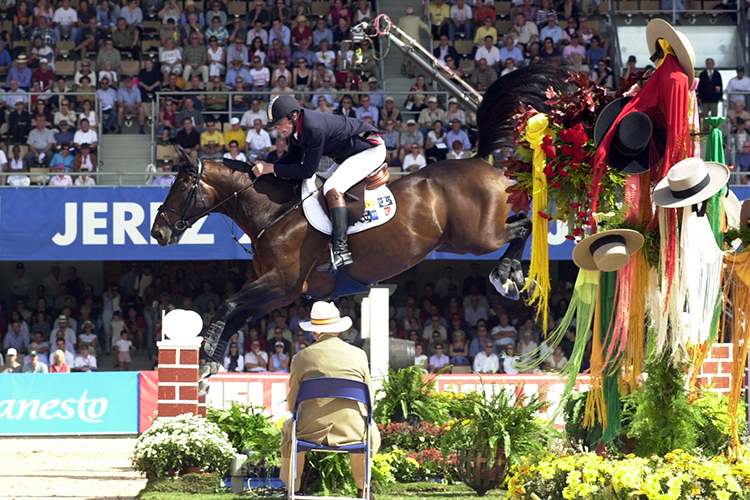
Diamant de Sémilly
Once again, turning to the example of Diamant de Sémilly – in the last season he bred 368 mares, and a very high proportion of his Harem were highly ranked: 356 of these mares had a significant BSO, while the average BSO of his mares was 8.35. The stallion who attracted the mares with the highest BSO was Quick Star (Galoubet / Nithard) , with 13.42 but then he only bred 12 mares. If we are looking for a stallion with a large book of mares, we must turn to Cornet Obolensky (who appears in the French lists under his original title, Windows vh Costersveld, Clinton / Heartbreaker) who covered 206 mares of whom 201 were graded ‘significant’ for an average BSO of 11.54.
next the lists…
Etalons monte 2016 avec BSO superieur ou égal à 15 et CD supérieur à 0.70 is the category of the stallions active in 2016 with a good BSO and a significant number of progeny incorporated in the calculation (at least over 10) so that the CD is over 0.7.
Looking at the top 30 stallions on this list, the maths are neat – 15 Selle Français, 15 ‘foreigners’ – five each from the BWP and Holstein, and three from the KWPN.
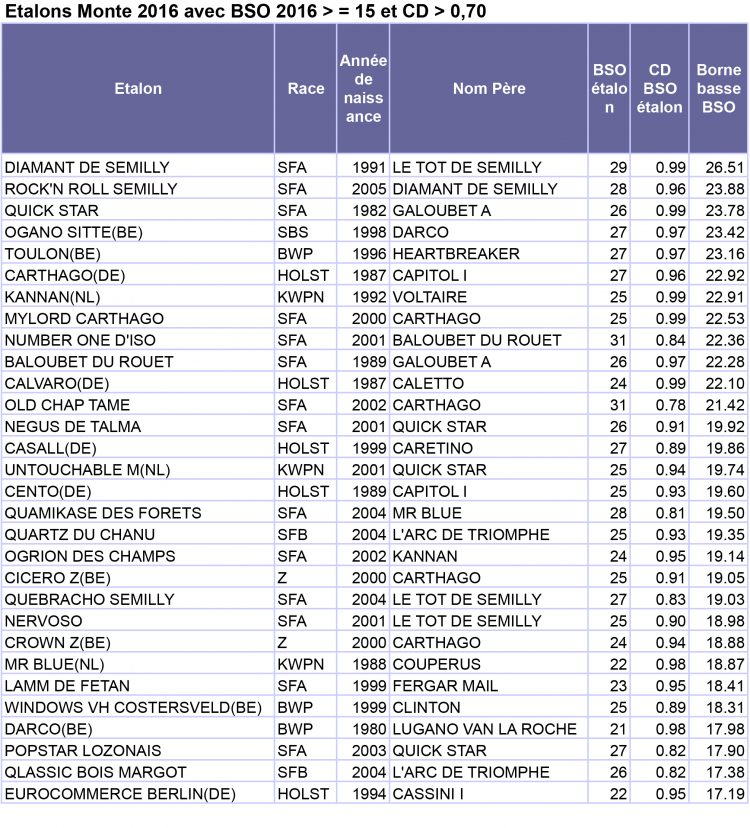
Not surprisingly, Diamant de Sémilly and Kannan are neck-to-neck when it comes to attracting the ladies – 368 for the Frenchman, 365 for the Dutch stallion. The third most popular stallion with a book of 221, sixteen-year-old Nervoso is a bit of a wild card. He is certainly well bred, by Diamant de Sémilly, out of Estrella del Dia, a Grand Prix jumper herself, and by the great Galoubet A. He comes from the family of the famous Starter…
All well and good, but the performance is perhaps a little thin, his best outing a win in a three-star CSI at Lons-le-Saunier in a career with Bruno Broucqsault that spanned 2008 to 2013 – nor does he seems to have sired anything notable. Odd that he should have covered 15 more mares than Cornet Obolensky…
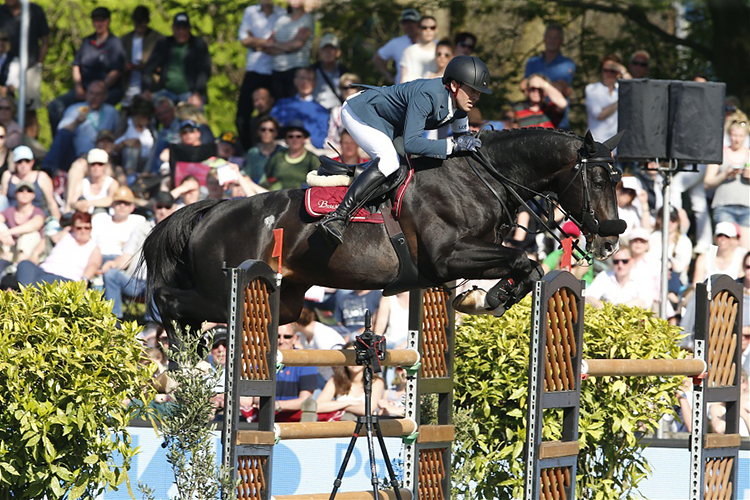
Qlassic Bois Margot
Mylord Carthago (Carthago / Jalisco) is getting his chance with 180 mares as is Qlassic Bois Margot (out of a Galoubet mare) with 129, while his sire, L’Arc de Triomphe (Landor S / Pilot) despite finishing out of the top 30 with a Borne Basse of 15.73, still manages to attract 128 mares. Another imported son of Landor, Lauterbach (Contender) covered 154, despite being 39th ranked of the established stallions. Coming in at 51st, the well-promoted PSI stallion, Balou du Rouet (Baloubet du Rouet / Continue) was popular with 192. Another who was quite low in the BLUP standings, but still popular with the breeders was Penelope Leprévost’s young stallion, Vagabond de la Pomme (Vigo d’Arsouilles / For Pleasure) with 124.
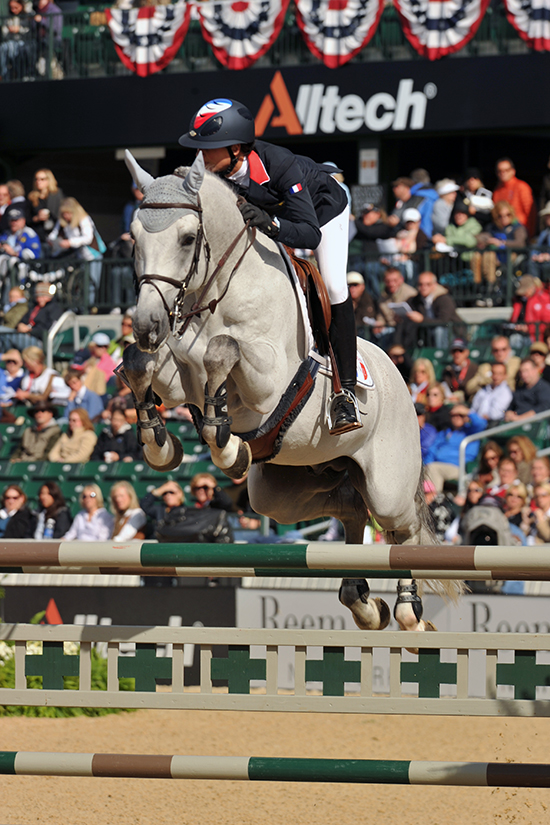
Mylord Carthago
The world’s number one eventing stallion, Contendro (Contender / Reichsgraf) drew 263 mares – he has a Borne Basse of 13.10 to go into 64th on the standings.
Arnaud suggests that the other BLUP table, the one for stallions with a CD between 0.40 and 0.70 is not really all that important. “These stallions have a small number of progeny, or the BSO is only based on the ancestry and the performances of the stallion himself. In this case, the Borne Basse is only a ‘safety net’ and will change when enough progeny will be measured… My experience is that we should only look at a CD over 0.80 to start to find meaningful genetic value…”
read on…
Still there are a few stallions in this group that have drawn the mares. Way the most popular with a book of 305 was Andiamo Sémilly (Diamant de Sémilly / Muguet du Manoir). This young stallion was born in 2010, and he is certainly well connected, bred by Richard Levallois, at the famed Haras de Couvains, home of his sire, and grand-sire, Le Tot de Sémilly. Still you have to admire the mare owners courage, since while Andiamo was a champion as a four and five year old, he has yet to show his colours in international competition.
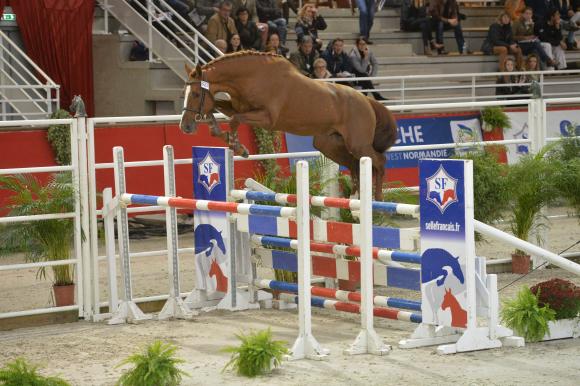
Candy de Nantuel
Not far behind him with 257 was the five-year-old, Candy de Nantuel (Luidam / Diamant de Sémilly). He is one of the GFE line up of stallions, and not surprisingly the promo is wildly enthusiastic: “He is the revelation of the year 2016 and the prototype of the modern sports stallion with a dream gallop, explosiveness, elasticity and enormous respect for the obstacle. His serenity, his blood, his flexibility and beautiful pedigree give hope for an exceptional career in the sport and the breeding.” It proves again that the French stallion owners have quite a turn of phrase, and that French breeders will give a younger stallion a chance.
At the other end of the spectrum in this group we find the proven sire, Montender (Contender / Burggraaf) an Olympic competitor and double European Champion with 162 breedings. Vleut (Quick Star / Cantus – out of the international Grand Prix mare, Audi’s Sikke) and a five-star winner himself, covered 176 mares.
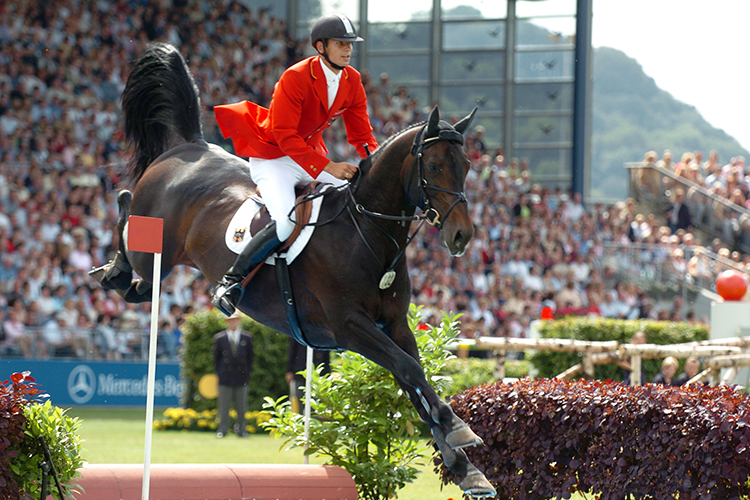
Montender competing at Aachen with Marco Kutscher
It would seem that the days when the BLUP ruled French breeding are long gone, and perhaps that is a good thing…
over to the Dutch rankings….
The KWPN
What a wonderful sire Heartbreaker (Nimmerdor / Silvano) has been, and this year he tops the German and the Dutch standings. The Dutch divide their breeding values into stallions with a reliability of more than 90%, stallions with a reliability of 80 to 89%, and stallions with a reliability of less than 80%, and, of course, Heartbreaker heads the over 90% list with a breed value of 175, way out in front of his son, Padinus (Grannus) on 159.
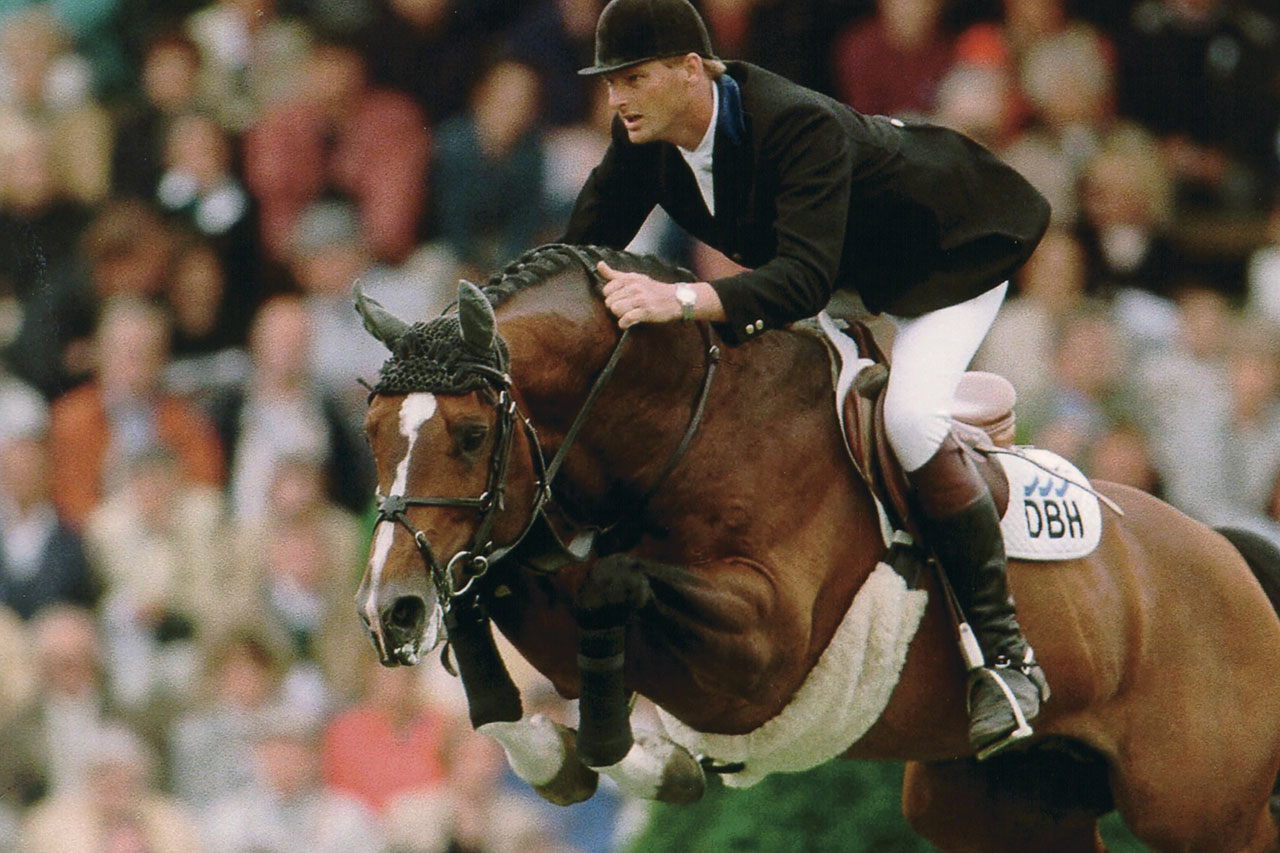
Heartbreaker
Padinus has been the sire of solid performers at Three-Star shows rather than superstars, still he has produced seven horses that have won more than €50,000, including three that have won more than €100,000 with the standout star being Admara 2, out of a mare by the Burggraaf son, Murano, and the winner of €782,914.
Heartbreaker is the sire of 968 offspring over the age of 4, with 433 going on to compete (44.82%), his most recent competitors appeared in 2011, but bear in mind that Jeanette Nijhof told me she is sitting on some semen in the freezer box:
“In Italy they have a process called “ixci” – invitro fertilization. It is still quite expensive, but we hope it will become less expensive in the coming years and therefore we have kept one thousand straws of Heartbreaker. Then we’ll have the chance of producing offspring by the real ‘one’. The other option is cloning but I don’t know if we will have to make that choice, but we have secured his skin to make the clone if we want to.”
“Hopefully for the future we will have many more Heartbreakers. At the moment, in the WBFSH top 100 world rankings there are many direct offspring of Heartbreaker and 21 have mothers by Heartbreaker, so he is very influential on the sire side, but also on the dam sires’ side.”
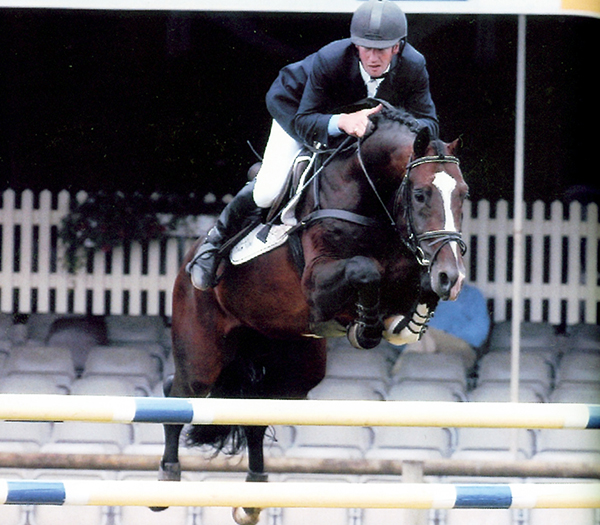
Padinus
Padinus also had his most recent competitors appear in 2011. He has produced 490 progeny over the age of four, of which 172 have gone on to compete (35.1%).
Here are the top 25, I doubt you will find any surprises:
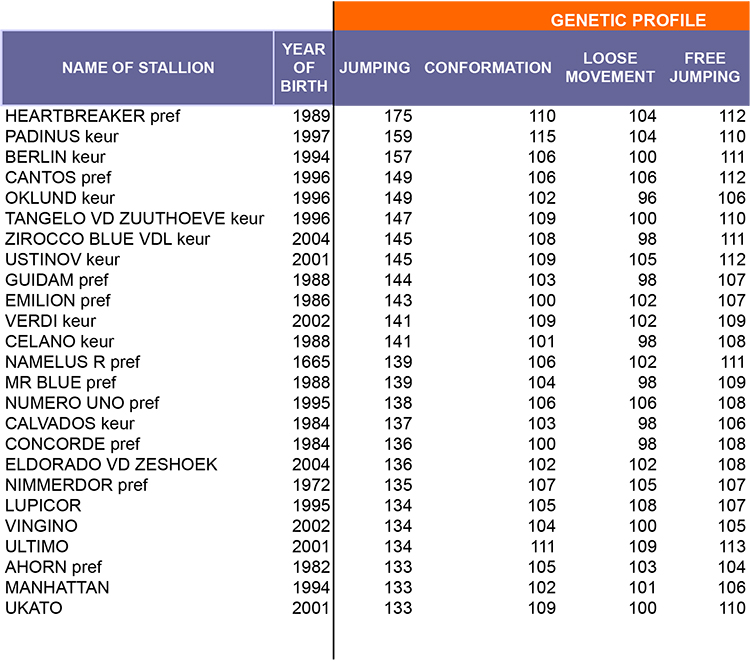
At the 2017 KWPN Stallion Show, 31 jumper colts were accepted for performance testing. The commission accepted an interesting balance of ‘something old, something new’.
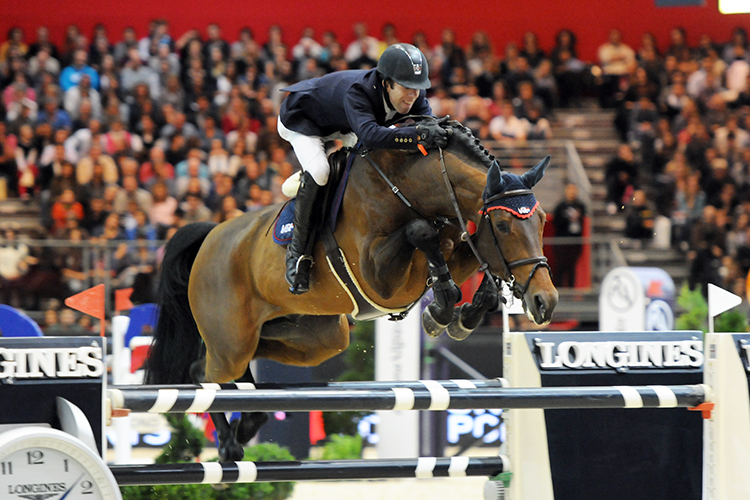
Verdi
Established sires Verdi (Quidam de Revel / Landgraf) and Kannan (Voltaire / Nimmerdor) sent three sons through to the test, while young stallions like Flying Dream (Zapatero / Indoctro), Entertainer (Warrant / Corland) produced one each while Farfan M (Cantos / Lux) was successful with two. The four colts that made the championship were Jonkheer de Span (Farfan M out of Celebration Z by Calvin Z); the Kannan son, Juventus V G (out of Duzella by Indoctro); Joyride (Verdi out of Rachel by Heartbreaker) and Jordan (Zapatero out of Elia by Mermus R).
Here are the top twenty jumper stallions with a reliability of between 80 – 89%:
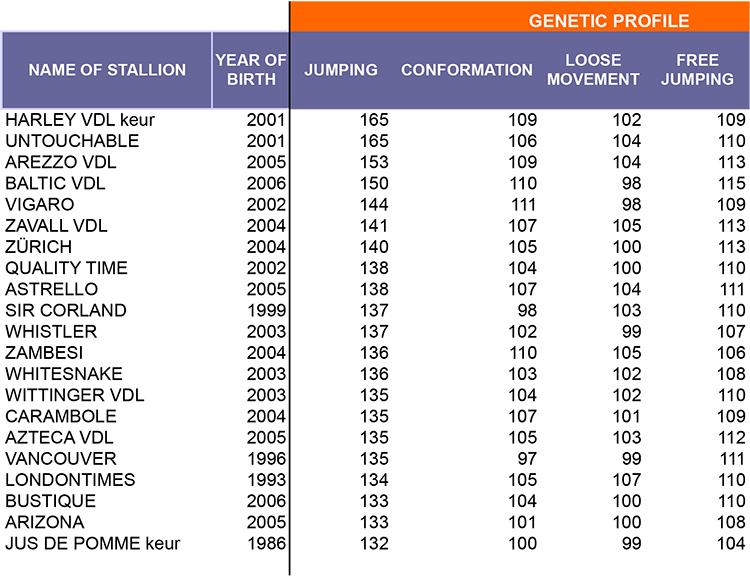
Dutch Dressage Stallions
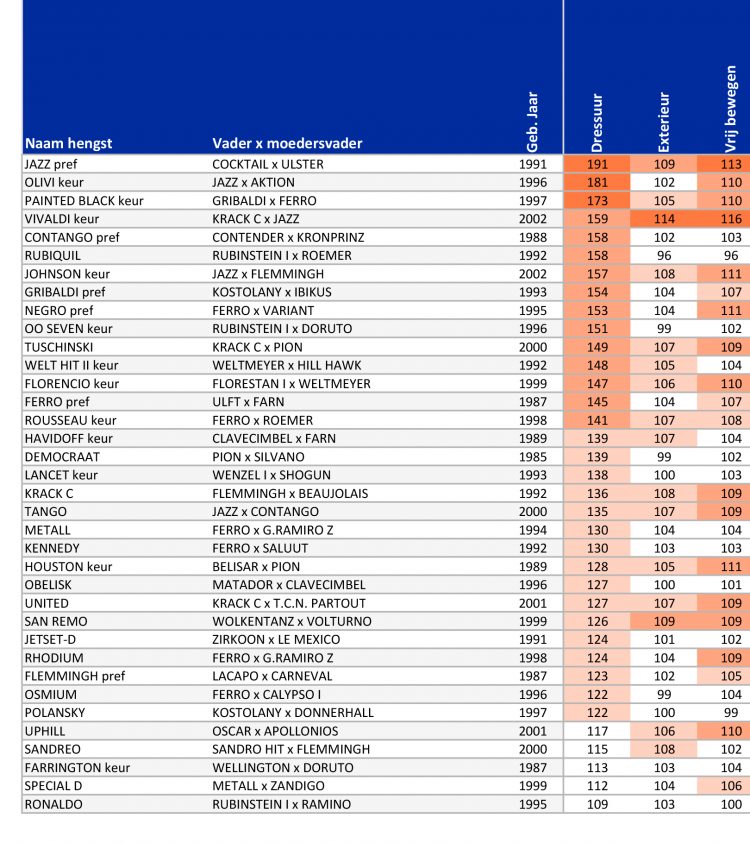
The Dutch have not followed the lead of the Germans in attempting to separate out the young horse results from the ‘real’ competition results, so their table of dressage stallions is once again something of a repeat of the past few years. Jazz is still the stallion with the highest breeding value – 191 – ten points clear of his son, Olivi (Aktion). Jazz has so far produced 2918 progeny over the age of 4, with 1060 going on to compete (36.32%).
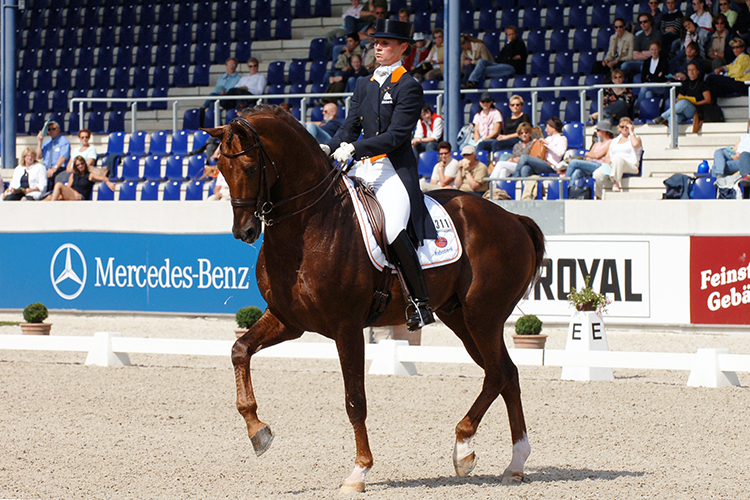
Jazz – Grand Prix competitor himself
Olivi has been based in France since 2008, but has produced 577 progeny over 4 years, of whom 181 have gone on to compete (31.36%). Olivi does not feature on the latest WBFSH ranking of the top 50 dressage stallions for 2016, perhaps because his most successful international competitor is Triviant (Saluut) who finished 2016 ranked 149th.
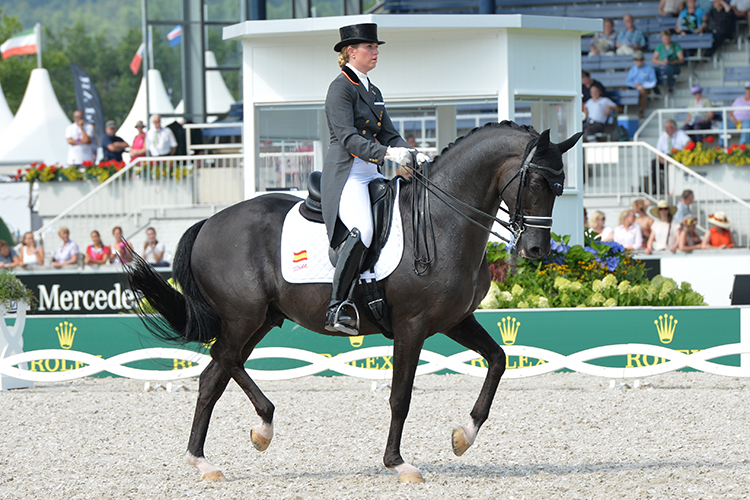
Painted Black
Painted Black, by the Trakehner, Gribaldi out of a Ferro mare, who was a moderate GP competitor with Anky van Grunsven, and a super schoolmaster for young Spanish young rider, Morgan Barbancon, comes in third with a breeding value of 173, and earns the praise of an acute observer of the Dutch scene, Johan Hamminga:
“Painted Black makes good horses…” Better than himself? “I think so, because when you have a mare with more frame, more length in the frame, this is a good cross.”
Painted Black has produced 524 progeny over four, with 189 going on to compete – 36.06%.
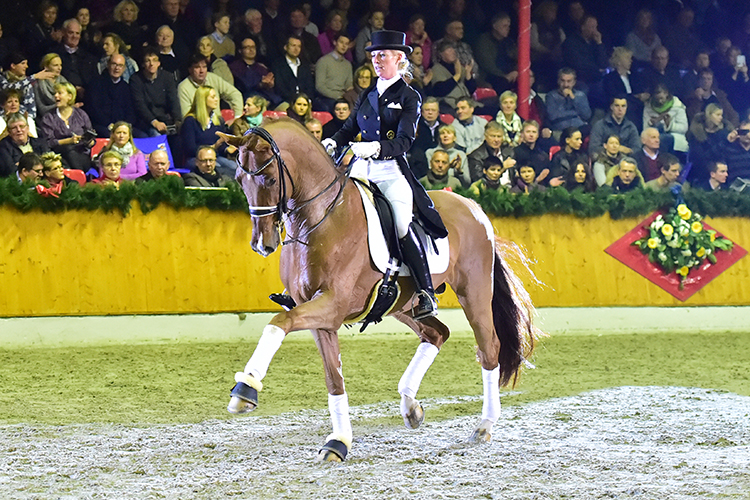
Vivaldi
Johan is even more enthusiastic about the stallion in 4th, Vivaldi (Krack C / Jazz):
“Vivaldi is one of the best young stallions, and it seems with the offspring of Vivaldi that they have a very high level of rideability, so we hope Vivaldi will be a successful stallion with the blood of Jazz.”
more below…
What mares does he need?
“The most successful combination is Vivaldi / Havidoff, or Vivaldi / Ferro is a very good combination. Vivaldi needs power from behind, but his character is very good – so we are aiming for dressage horses with a good character as well as natural balance.”
Vivaldi has produced 930 progeny over four, for 281 competitors, 30.215%.
Interesting, not one of the top 25 stallions on the KWPN Ranking of Sires with over 90% reliability, sired one of the colts licensed at this year’s KWPN stallion show. Not one. Indeed the most successful stallions at den Bosch were the ageing Hanoverian, De Niro (Donnerhall / Akzent II) with three colts licensed, followed by Charmeur (Florencio / Jazz), Desperado (Vivaldi / Havidoff), Ferdeaux (Bordeaux / Ferro) and Bordeaux (United / Gribaldi), with two each.
Seven dressage colts went into the Championship lineup, which was won by Jameson (Zack / Negro / Krack C) while the Reserve, Jironn L is by Charmeur out of a Rubin Royal mare. The third placegetter was Jewel (Ferdinand / Santano) and in case, like me, you have no idea who Ferdinand is, he is a seven-year-old licensed KWPN stallion by Vivaldi out of a Havidoff mare.
Here are the top 20 dressage stallions with a reliability of 80-89%:
